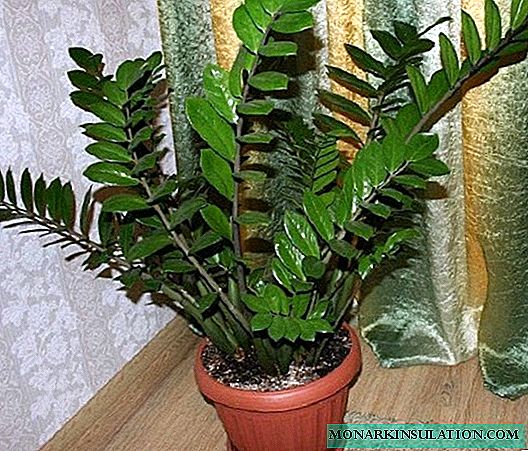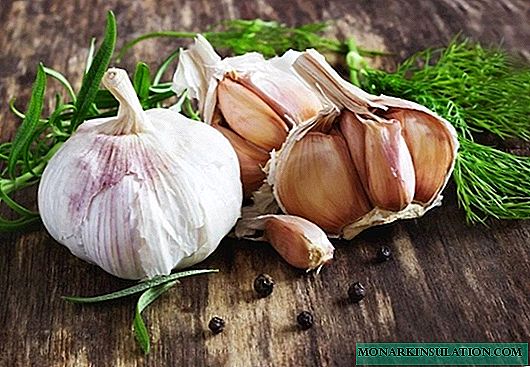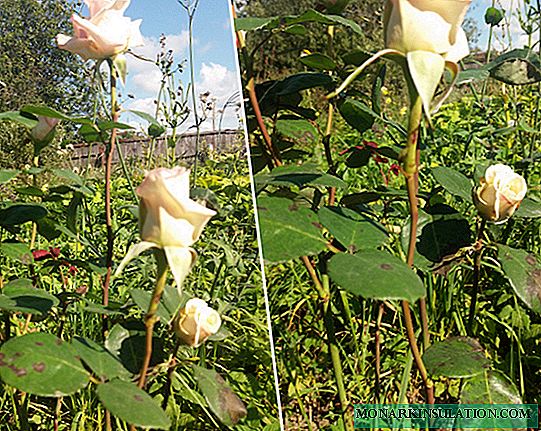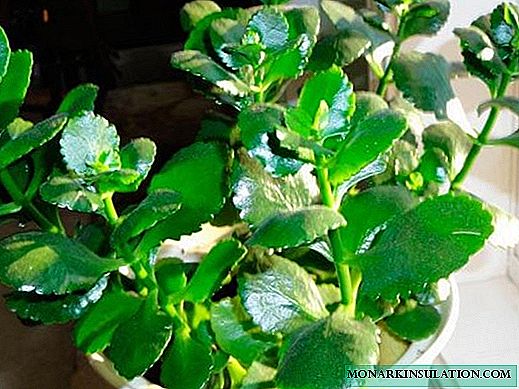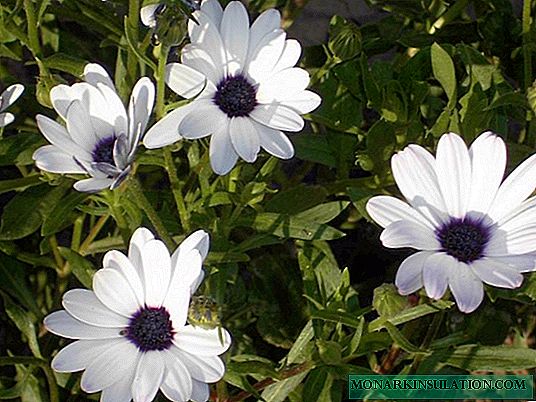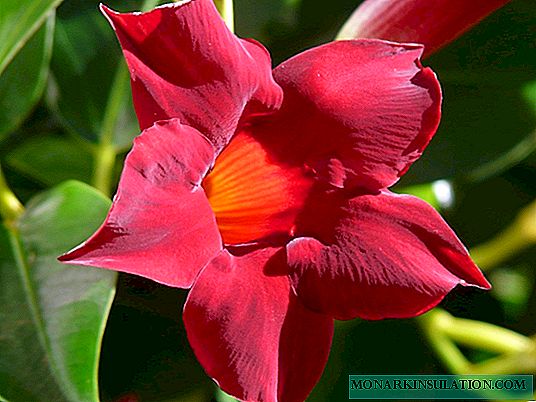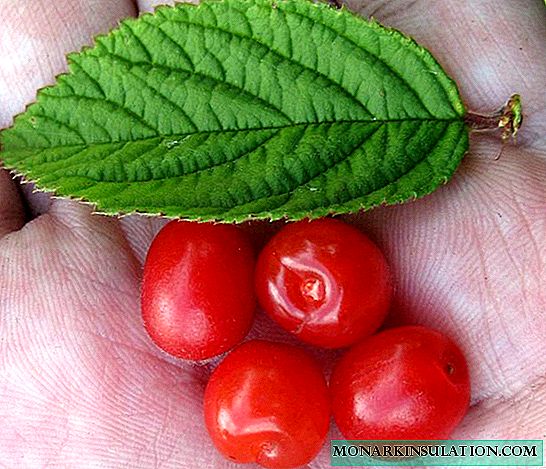
Felt cherries are traditionally grown as a fruit and ornamental plant in China and the Russian Far East instead of ordinary cherries that do not take root there. This relatively unpretentious shrub is very beautiful during flowering, and also gives good yields of delicious sweet and sour fruits, very similar to ordinary cherries. In the last century, the mass introduction of plantings of felt cherries began in the central regions of the European part of Russia, caused by a number of reasons, including the mass death of old cherry orchards from a dangerous fungal disease - coccomycosis, to which felt cherries were completely resistant.
Felt cherry - a valuable dining and decorative culture
In the wild, felt cherry is found in the relatively arid mountainous regions of Central Asia. It was first introduced to culture in Western China several centuries ago, from where it gradually spread to all neighboring regions, including the gardens of the Russian Far East. In the gardens of the European part of Russia began to appear in the first half of the last century as an exotic ornamental and fruit plant
Sometimes felt cherries are also called Chinese cherries, or Ando.
Felt cherry on video
Felt cherry - deciduous shrub about two meters high. It differs easily from other related stone crops in broad, wrinkled, slightly pubescent leaves, for which it got its name. Sometimes pubescence is noticeable on the fruits of this plant. Felt cherries favorably differ from European cherries (ordinary and steppe) by the complete absence of root shoots.

Felt cherry got its name due to the felt pubescence of its large wrinkled leaves
Felt cherry blossoms very early, in Primorye - in the first half of May, in the European part of Russia - about a week earlier than ordinary cherry. Flowering occurs simultaneously with the beginning of leaf blooming. During flowering, return frosts are very dangerous, which can completely destroy the future crop. The flowers are white or pale pink, densely clinging branches. During flowering, the bushes are very beautiful, so felt cherries are often grown as an ornamental plant.

Felt cherry is very beautiful during flowering.
Flowers are pollinated by bees, bumblebees and other insects. All existing varieties need cross-pollination, therefore, to obtain a crop, at least 2-3 plants of different varieties must be planted on the site. In other field crops, felt cherry is not pollinated in natural field conditions (although there are artificially produced hybrids with sand cherry and some diploid plum species of the Ussuri-Chinese and Canadian groups).
Self-fertile varieties of felt cherries do not exist!
The ripening of felt cherry fruits in Primorye begins in mid-July, in the European part of Russia - about a week earlier than ordinary cherries. The berries are red, rounded, on short stalks, with a good harvest, densely sitting on the branches. Ripened fruits in most varieties can be stored on bushes for a long time without crumbling. The difference in ripening between the earliest and latest varieties of felt cherries is about a month. Planting varieties of different ripening dates allows you to extend the collection and consumption of fresh berries of this crop.
Harvested fruits are not transportable and are not stored for a long time, requiring immediate consumption or processing. The fruits are very tender, juicy, pleasant sweet and sour taste, slightly reminiscent of an ordinary cherry. They make good canned food, compotes, preserves, juices. You can preserve them separately or in a mixture with other fruits and berries.

Felt cherry berries are delicious fresh and good for home canning.
The usual average yield of young plants is about 2-3 kilograms of fruit from each bush, adult varietal under favorable conditions - up to 10 kilograms from a bush.
Felt cherry is very early. Even the seedlings obtained by sowing the seeds of wild plants bloom and give fruit already in the third or fourth year, and rooted cuttings of cultivated varieties and grafted plants are sometimes even earlier, already in the second year.
Unfortunately, felt cherry bushes do not live long, especially in unusual climatic conditions. Very often, already at the age of eight, large skeletal branches completely dry in plants, and after a year or two bushes completely die. Even in the most favorable climate, felt cherry bushes rarely live longer than 15 years.
Timely rejuvenating pruning allows you to slightly extend the life of plants, but not for long. Therefore, when growing felt cherries, you should constantly take care of growing new young plants to replace rapidly aging plantings.
Features of growing felt cherries in various regions
In Russian Primorye and in neighboring regions, felt cherry is an important fruit crop that almost completely replaces ordinary cherry there, which does not withstand the harsh conditions of the Far Eastern climate. Almost all existing Russian varieties of felt cherries were created precisely in the Far East, where it has been grown for a long time and in large quantities. And all the information about the record winter hardiness and unpretentiousness of felt cherries refers exclusively to the special specific conditions of the Far Eastern climate with deep stable snow cover lying on already frozen ground, and even frosty winters without thaws.

The most viable and fruitful felt cherry in the area of its traditional cultivation - in the Far East
The praised frost resistance of felt cherry wood to -40 ° C is manifested only in the Far East, although even there, flower buds are already damaged at -30 ... -35 ° C. In other regions, its frost resistance is noticeably reduced.
Felt cherry grows more or less normally in certain regions of Kazakhstan and southern Siberia, where winter climatic conditions are generally close to the Far East (winter without thaws, deep snow on frozen ground).
In most regions of the Urals, felt cherries winters poorly and freezes regularly, and during severe winters it freezes completely, noticeably inferior in frost resistance to steppe cherries that are more adapted to local conditions.
To the west of the Urals (the European part of Russia, Belarus, northern Ukraine), the cultivation of felt cherries becomes problematic, and its success largely depends on the soil and climatic features of a particular site. In the southern part of this region, unstable winter temperatures, the alternation of winter thaws and snowless frosts are a big problem. In such conditions, freezing of flower buds and even freezing of whole branches often occurs already at -25 ... -30 ° С. In the more northern regions, winter heating of the bark near the root collar becomes very serious, which occurs either during winter thaws, or in cases when deep snow falls on melt ground, or when the ground thaws under a thick layer of snow during a warm winter. That is why any attempts to warm felt felt for the winter in this region lead to the death of plants. Some amateur gardeners in central Russia even deliberately shovel snow from the felt cherry bushes at the beginning of winter to allow the soil to freeze and protect the bushes from aging.
Particularly poor conditions for felt cherries are formed in the Leningrad Region and adjacent regions of the Northwest: unstable winters are here with a constant threat of plants growing warmer, and wet rainy summers regularly provoke outbreaks of various fungal diseases. In the Moscow Region and neighboring regions of central Russia, the conditions are already slightly better, and for many amateur gardeners in the areas favorable to it, felt cherry grows quite well, but is short-lived and requires constant renewal of plants.
Varieties and hybrids of felt cherry
Both in Soviet times and in modern Russia, serious breeding work with felt cherries was carried out almost exclusively in scientific institutions of the Far Eastern region. All currently zoned varieties are of either Far Eastern or Siberian origin. The Michurin experimental varieties that once existed have not survived to this day.
Fruits of felt cherries most often have a light red color, and in ordinary cherries, dark-colored varieties are more highly valued by consumers. To obtain varieties with a more attractive color of berries, complex breeding work was carried out to cross felt cherries with a closely related North American species - sand cherry, which has very attractive dark-colored fruits. Many of these complex hybrids have been very successful, and are cultivated to this day, classified as varieties of felt cherries.
Hybrids of felt and sandy cherries (table)
| Title | Fruit coloring | Fruit Size (in grams) | Ripening period | Originator | Note |
| Damanka | Maroon | 3,0-3,5 | Late | Far | A very famous and popular hybrid of the middle of the last century. I used to be in the State Register. At the moment, the State Register is missing, the reasons for the exclusion are not known. It is still actively grown in amateur gardens and private nurseries. |
| Summer | Light red | 3,0-3,5 | Late | Far | There is a state registry. A very famous and popular hybrid of the middle of the last century |
| Alice | Maroon | 3,3-3,6 | Average | Far Eastern Station VNIIR | There is a state registry. Very popular variety of the end of the last century |
| Autumn Virovskaya | Dark red | 3,3 | Average | Far Eastern Station VNIIR | There is a state registry. Popular variety of the end of the last century |
| Natalie | Dark red | 4,0 | Mid early | Far Eastern Station VNIIR | There is a state registry. Very popular variety of the end of the last century |
| Pink crop | Pink | 3,0 | Average | Far | At the moment, the State Register is missing for unknown reasons. There is in the catalog VNIISPK. It was transferred to the state testing in 1991 |
| Tsarevna | Hot pink | 3,6-4,0 | Average | Far Eastern Station VNIIR | There is a state registry. Very popular variety of the end of the last century |
| Beauty | Dark pink | 3,0-3,5 | Late | Far Eastern Station VNIIR | There is a state registry. Popular variety of the end of the last century |
Varieties and hybrids of felt cherry (photo gallery)

- Felt Cherry Tsarevna
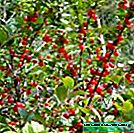
- Felt Cherry Pink Crop
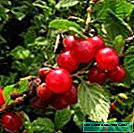
- Felt Cherry Autumn Virovskaya
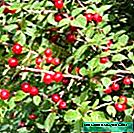
- Felt Cherry Spark

- Natalie Felt Cherry
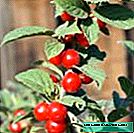
- Felt Cherry Favorite

- Felt Cherry Summer

- Felt Cherry Gourmand

- Felt Cherry Beauty

- Felt Cherry Marvelous

- Damanka Damanka

- Amurka felt cherry

- Felt Cherry Alice
Other varieties of felt cherries (table)
| Title | Fruit coloring | Fruit Size (in grams) | Ripening period | Originator | Note |
| Twinkle | Red | 2,5-4,0 | Mid-late | Far | At the moment, the State Register is missing for unknown reasons. A popular variety of the middle of the last century, used to be in the State Register. Is in the catalog VNIISPK |
| Amurka | Red | 2,7-4,0 | Average | Far | There is in the catalog VNIISPK. I used to be in the State Register, now missing for unknown reasons |
| Darling | Dark pink | 3,3 | Average | Far Eastern Station VNIIR | New variety, present in the State Register since 2009 |
| Gourmet | Red | 3,0 | Early | Far Eastern Station VNIIR | At the moment, in the State Register is missing for unknown reasons. |
| Wondrous | Scarlet red | 3,0-3,5 | Average | Agrofirm "Gavrish" | In the State Register is absent. On the offsite of agricultural company "Gavrish" seeds of this variety are offered for sale |
| Maroon | Aloe maroon | 3,6 | Average | Unknown | It is absent in the State Register, it is also absent in the VNIISPK catalog, it is not mentioned anywhere in the special literature. On the Internet is found only on dubious sites of private nurseries and online stores |
Compatibility of felt cherry with other stone fruits
With European types of cherries (ordinary, steppe and sweet), felt cherries have only purely external similarities in the type of fruit and its taste. Genetically, they are very far from each other, are not pollinated under any circumstances, and are absolutely incompatible with vaccination.
The closest relative to felt cherries is the North American sand cherry (Bessey). They are well grafted onto each other. There are also many hybrid varieties obtained by artificially crossing these two cultures. So-called cherries are also created - complex hybrids obtained by artificially crossing felt and sand cherries with Sino-American diploid types of plums. They are also compatible when vaccinated with felt cherries.

The closest relative of felt cherries is the North American sand cherry (Bessey)
Felt cherry is also mutually compatible when vaccinated with many varieties of plum from the Ussuri-Chinese group and hybrid forms of cherry plum. With European plum varieties of home, black and thorny compatibility, vaccination is poor, and inter-pollination is basically impossible.
Some amateur gardeners are trying to use seedlings of felt cherry as a non-forming root shoot of a dwarf stock for apricot and peach. The survival rate of such vaccinations is small, although possible. A lot depends on the specific varieties and conditions.
Felt Cherry Inoculation
The best rootstocks for varietal felt cherries are young seedlings of felt and sand cherries. The most convenient for beginning gardeners is a summer eye vaccination (budding), which is carried out in the second half of summer.

Okulirovka - the most affordable way for vaccinating felt cherries for beginners
The procedure for vaccination is as follows:
- Choose a healthy, well-rooted, seedling growing in a good place - the future stock.
- In the southern part of the crown of the varietal bush (scion), choose a healthy, well-developed young shoot of the current year. Cut it with a sharp knife and place in a bucket of water.
- Approach with a cut shoot to a plant-rootstock. Check the sharpness of the tool and the readiness of the harness (it is convenient to use an elastic insulating tape wound on the plant with the sticky side out).
- From the shoot of the scion, cut off the shield - a kidney with a piece of wood. Cut the leaf from this kidney, leaving only the petiole.
- On the stem rootstock make a T-shaped incision of the bark.
- The scion shield must be firmly inserted into the cut of the bark on the stock and wrapped tightly with an elastic strapping without closing the kidney itself.
- It is often recommended to wear a protective plastic bag on top to reduce evaporation.
- If everything is done correctly, by the end of summer - the beginning of autumn, a grafted eye will take root.
- The harness is usually removed the following spring before budding.
Propagation of felt cherries
For propagation of felt cherries, seed and vegetative methods are used. Sowing seeds is technically much simpler and allows you to get more adapted to local conditions plants. Varietal characters during seed propagation are only partially preserved, therefore, in order to preserve their own valuable varieties, one has to resort to vaccination or cuttings.
Propagation of felt cherry with green cuttings
Felt cherries are relatively well rooted in green cuttings in mid-summer.

Green felt cherry cuttings take root pretty well
The procedure is as follows:
- From well-developed young shoots of the current year, cut cuttings with a length of about 10 centimeters.
- Remove the lower leaves from the cuttings.
- Treat the lower part of the cuttings with a root stimulant (heteroauxin or something similar) according to the instructions for the drug.
- Stick the cuttings with the lower part into a pre-prepared moistened sand-peat substrate. It can be rooted in pots or on a specially prepared bed located in partial shade.
- Cover with a non-woven covering material or inverted cans to protect from the scorching sun and preserve moisture.
- Throughout the entire rooting period, keep the soil in the cuticle constantly moist.
Propagation of felt cherry seeds
In favorable conditions, felt cherry easily gives plenty of self-seeding. Found young plantlets in the next spring can be transplanted to a more suitable place for them. You can also specifically sow seeds from the fruit, it is better to immediately to a permanent place, to avoid damage to the roots during transplantation and to accelerate fruiting.

Felt cherry is easiest to grow by sowing seeds immediately to a permanent place
The procedure is as follows:
- From the fully ripened good fruits, take out the seeds, rinse, let them dry slightly and store in slightly damp sand until autumn.
- In October, sow the seeds immediately to a permanent place to a depth of 3-4 centimeters, 4-5 seeds per nest with sufficient distance between them for subsequent thinning. No need to cover.
- In spring, seedlings will appear, of which in summer they leave 1 best plant in the nest, the rest are cut under the root.
Felt cherry transfers a transplant only at a very young age, not older than 3-4 years. It is advisable to transplant in early spring before budding, digging up plants with as large a lump of earth as possible. Older plants die during transplantation.
Choosing a place and planting felt cherry
Felt cherry is very photophilous and does not bear fruit in shading. This culture is drought-resistant, grows well on slopes, on light sandy and sandy loamy soils of neutral reaction. She absolutely does not tolerate moist lowlands, nearby groundwater, heavy clay soils and high acidity. If necessary, liming the site is carried out in advance, at least one year before planting seedlings.
When choosing a place, it should be borne in mind that the felt cherry has a superficial root system, therefore under it and next to it it is impossible to dig deep, only surface loosening to a depth of no more than 10 centimeters is permissible. Felt cherry does not give root shoots, clogging the garden. It should not be planted close to other stone fruits (cherries, plums), which have common diseases with it.
The best time to plant is early spring, before the buds open. In the most extreme case, planting in September is permissible, but in frosty winter such seedlings often die.
When choosing a place, one must take into account that felt cherry needs cross-pollination, which requires the presence of at least 2-3 different varieties nearby. The distance between the bushes when planting is at least 2 meters.

When planting felt cherries, the root neck of a seedling cannot be deepened
The procedure for landing:
- Dig a hole with a diameter and depth of about half a meter.
- Mix the ground from the pit with a bucket of humus, 1 kg of wood ash and 0.5 kg of superphosphate.
- Drive a stake in the center of the pit to garter a seedling.
- At the bottom of the pit pour an earthen mound.
- Using the board laid across the pit, place the seedling in the pit so that its root neck is located exactly at the level of the soil surface. In this position, attach the seedling to the peg.
- Spread the roots of the seedling and fill the pit with earth, carefully compacting so that there are no voids.
- Pour a bucket of water under the seedling.
- When water is absorbed, mulch the trunk circle with sawdust.
Lime, fresh manure and mineral nitrogen fertilizers cannot be used during planting!
Felt Cherry Care
Overwintered plants are inspected in spring and pruned if necessary. Only young seedlings of the first year of planting in a bucket of water per plant once a week need watering, and then only in the absence of rain. In the second half of summer, watering is stopped. The ground under the bushes is best kept under the mulch of sawdust or tree bark to avoid damage to the roots and prevent the growth of weeds.

Felt cherry grows and bears fruit successfully only in good sunlight
Excess fertilizer on felt cherry is harmful. It is enough to feed her once a year, in the spring after flowering. Fertilizer rates per 1 square meter:
- 5-7 kg of decomposed humus or compost;
- 60 g of superphosphate;
- 15 g of potassium salt;
- 20 g of nitrogen fertilizer.
Fertilizers are evenly spread over the entire surface of the earth under the crown and lightly embedded in the soil with shallow loosening.
Nitrogen should not be added categorically in the second half of summer and autumn, this reduces the winter hardiness of plants.
Pruning Cherry Felt
In a young seedling that does not have lateral branches, after planting, the tip is usually slightly shortened to stimulate branching. If there are already a lot of lateral branches, nothing needs to be shortened so as not to thicken the bush.
In the spring, after the awakening of the kidneys, it is necessary to cut out all dried, frozen and obviously diseased branches. Large sections should be covered with garden var. If after the death of large branches the bush turned out to be too curved, you can give it a more accurate shape for a more even recovery.

The oldest and inconveniently located branches for rejuvenating bushes are cut out from old plants.
In old plants, anti-aging pruning is performed, cutting out part of the oldest branches, first of all removing poorly located branches with weak fruiting.
Diseases, pests and other problems
Not always felt cherry pleases its owners with yields of delicious berries. This plant has its own specific problems requiring skillful solutions.
Felt cherry problems and what to do with it (table)
| Description of the problem | Causes | What to do with it | Note |
| Felt cherry does not bloom | Felt cherry is very early, normally even seedlings bloom in 3-4 years. If there was still not a single flower on the five-year bush, then something is wrong:
|
| Do not try to transplant an adult bush older than 3-4 years - the plant will certainly die! |
| Felt cherry blossoms but does not bear fruit |
|
| |
| During flowering or immediately after it, the leaves on some branches suddenly completely dry out, like burnt | This is a very dangerous fungal disease - moniliosis, or monilial burn. |
| Do not plant felt cherries next to other stone fruits - they all have common diseases that are easily transmitted from one plant to another |
| The fruits rot, covered with gray "pads" of moldy spores | Gray fruit rot - a fungal disease closely related to moniliosis |
| |
| Instead of normal (juicy and red) fruits, deformed sack-like, similar to green pods, are formed | Fungal disease - deforming tafrin (among gardeners, better known as "plum pockets") | ||
| Leaves are gnawed | Leaf-eating caterpillars of harmful butterflies, most often various moths |
| |
| Leaves are twisted, covered with small sucking insects. | Aphid |
Diseases and pests of felt cherries (photo gallery)
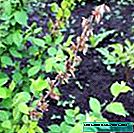
- With a monilial burn, the leaves suddenly dry, like burned
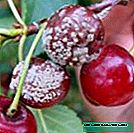
- Fruit rot is especially rampant in wet rainy summers

- When tafrina is affected, instead of normal fruits, green hollow pods are formed

- Moth caterpillars can leave the plant completely without leaves

- Aphids weakens plants by sucking juices from leaves
Gardeners reviews on felt cherry
I also have a favorite - this is felt cherry. The trouble is that she is getting wet. They write that it is necessary to plant it so that the water does not stagnate in the hole. And she sows and sprouts beautifully, and also grows quite quickly from a seed and bears fruit early. Therefore, in the spring you need not to rush the weed near the cherry so as not to weed its sprouts
Tamara Semenovna
//www.tomat-pomidor.com/newforum/index.php?topic=183.40
Felt cherry - self-fertile. For crops you need either "neighborly" explosives or the purchase of different varieties.
Helga
//www.forumhouse.ru/threads/150606/
It's no secret that the enthusiasm of 30-40 years ago, when felt cherry was almost a background crop in the garden areas of the Moscow Region, has noticeably diminished. In recent years, many have bothered with constant fussing with annual cutting to the “live” and harvest in the form of several tens of berries. Those who did not completely destroy were landed over the fence along the road. This year I watched a rather funny picture, on one such explosive planted in a ditch, one single branch blossomed violently, near the ground itself. Recently I passed by, this branch has completely dried up, and the rest is completely nothing, no signs of moniliosis. At the expense of choosing varieties, it didn’t work for me, I brought from Khabarovsk: Damanka, Virovskaya and several more Far Eastern breeding, ALL eventually went to the barrel for burning
bodge
//forum.prihoz.ru/viewtopic.php?f=37&t=2420&start=75
I have a cottage in the north of the Moscow Region. At the beginning of the development, it had many bushes of felt cherry; in mid-May, unusual beauty blossomed. It is bred with a bone.
Tamara P
//www.websad.ru/archdis.php?code=719742
Felt cherry perfectly grows and bears fruit, without requiring special care, in the region of its traditional growth and cultivation in the Far East of Russia, successfully replacing ordinary cherry there. This shrub also works well in some areas of Siberia and Kazakhstan with a continental climate without winter thaws. The conditions of the European part of Russia are less favorable for this culture, but in amateur gardening in areas with a favorable microclimate and suitable soil type, felt cherry grows well and regularly bears fruit, and regular selection of the best specimens during seed propagation allows obtaining plants that are more adapted to local conditions.



















